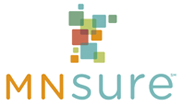Costs Explained
Here are common terms you will come across when you use your health insurance and pay medical bills.
Cost Sharing Phases
For most health insurance plans, there are three basic phases of cost sharing for non-preventive care. The time it takes you to move through these phases depends on your health care needs. Depending on your needs you may not go through all three phases within a plan year.
